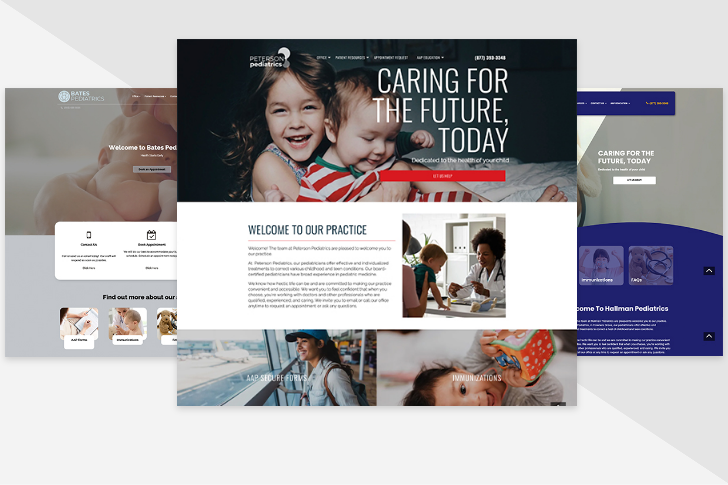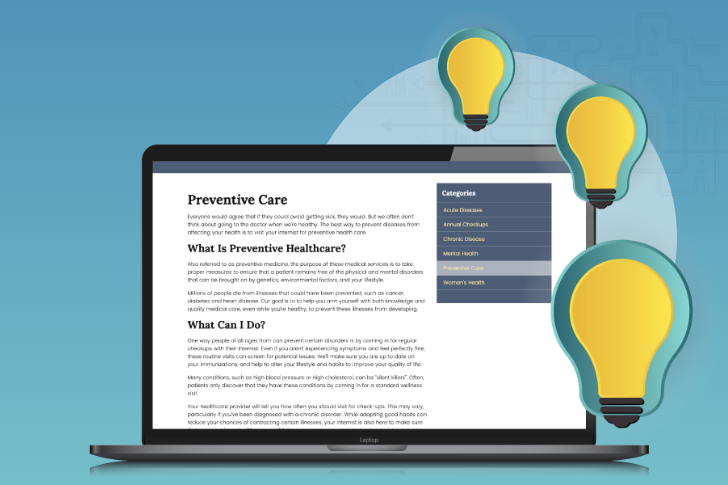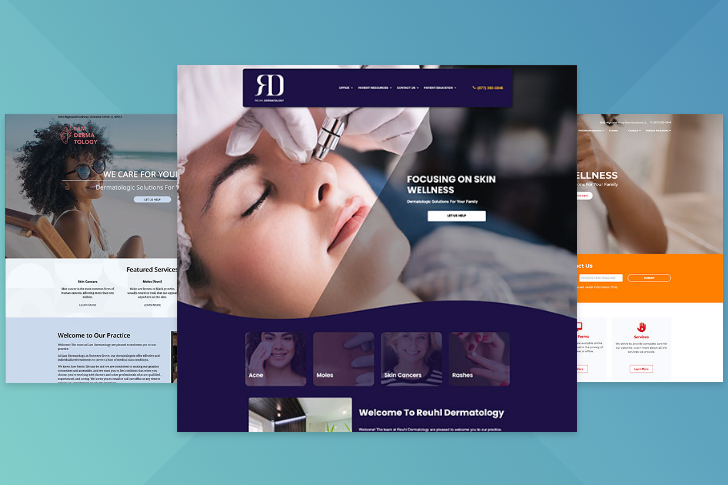
All independent medical practitioners strive toward excellence. How do you show that you provide pediatric healthcare best, then? The families and carers of pediatric patients put a lot of stock in the feedback they read from their friends, family, and strangers posted on healthcare review websites. Therefore, a pediatric website that has received dozens of five-star reviews is far more appealing than one with only two stars.
Medical reputation management is an integral part of pediatric healthcare marketing, even though it sometimes seems like you have no say in how your patients’ families rate your practice. To effectively manage your pediatric practice’s online reputation, you must know where and how your patients rate your services. These evaluations can be left on various sites, from social media platforms to search engine review hubs.
Where Can Patients Leave Their Reviews Online?
Yelp, Facebook, Healthcare-Focused review websites, and Google are the top four online places to solicit feedback from current and former patients (and their families/caregivers).
Google Reviews are the pinnacle of social feedback on the internet. But, of course, it helps a lot that Google is the giant among giants in the digital search landscape. Google Reviews top the charts in the United States, influencing patient decisions and boosting local search engine optimization.
Google uses user reviews as one of several factors to determine where a business ranks in local search results. For example, if you have a lot of happy customers who leave glowing reviews, Google will take notice. This means a higher search engine ranking when people look for your services.
Healthcare-Focused Review Websites
Vitals and Healthgrades are only two examples of healthcare-focused review sites. A profile on one of these databases can increase your practice’s visibility to those looking for a doctor in your area.
Investigating review sites where patients discuss your healthcare business is the first step in gaining control of your online reputation.
With millions of active users monthly, Facebook reviews carry significant weight with those considering a medical professional. Therefore, Facebook suggests keeping reviews visible at the top of your company page, where they appear by default.
Yelp
Putting your medical practice on Yelp is crucial in gaining patients’ confidence because the site was designed to facilitate evaluations of local companies. Yelp reviews can provide a rich story about the patient’s experience and the healthcare provider’s performance.
Ready to Take Control of Your Online Reputation?
Let Us Help You Improve Your Reputation with Proven Strategies
Officite is your trusted partner in HIPAA-compliant digital reputation management and digital healthcare marketing solutions. Our experts help you grow your independent pediatric practice with cutting-edge knowledge and technology built for healthcare providers.
Pediatric Reputation Management in the Digital Age
Patients and their caregivers are the ones who will eventually share their experiences about their experiences with your medical office. Still, you can take control of your pediatric practice’s image by soliciting feedback, responding to criticism, and using positive comments for expanded healthcare marketing.
Ask Current and Former Patients for Reviews
Pediatricians should undoubtedly care about their review counts online. Vital social proof is created by soliciting, monitoring, and responding to patient reviews, which means more potential patients (and their families) will choose your independent medical practice over your competition.
Social feedback is indeed a numbers game. Successfully soliciting more reviews from a broader range of patients can help provide a more complete picture of their experiences with your practice. One review is good, but twenty can paint a fuller picture of how your medical services are performed. Selecting a new doctor isn’t far from how people choose businesses to interact with online.
They want to find the best doctor and, if possible, to see if the doctor’s office can meet their needs and preferences. Of course, they can call to ask questions, but if you can motivate and convince them to call or book an appointment by simply showing patient reviews, the patient acquisition process would be much easier.
You can’t always stop people from saying negative things about your medical practice online, but you can choose to seek patients for feedback.
Did you know that only 12% of patients leave reviews? That means your office must solicit feedback because they’ll never write themselves. However, 35% of patients state that they would be willing to write a review about a doctor if the doctor/doctor’s office asked them to do so. You can do so in a variety of ways.
Doctors can easily automate asking recent patients for reviews using a reputation management partner like Officite. If you want a higher response rate from your review requests, incorporate them into your patient contact activities, like text messaging or email newsletters.
Addressing Complaints Online
Responding to criticism is essential to establish credibility, foster relationships, and settle disputes. In addition, it’s essential to address both positive and negative patient feedback. Patient reviews might be swayed positively or negatively, depending on how you respond to criticism.
If possible, responses to online criticism should come from the healthcare provider addressed by the person posting the complaint. If you routinely show that you answer complaints directly, you would also dissuade others from posting negative criticism on your profiles.
Transforming Feedback to Valuable Testimonials for Your Pediatric Practice
Facebook, Yelp, and Google are not the only places where reviews should live. You should use the reviews you’ve received to boost your marketing efforts. Some examples are:
· Repurposing reviews so you can share inspirational patient quotes online.
· Improving your website’s front page by adding a carousel that features patient reviews.
· Sharing in-depth video case studies.
· Particularly persuasive in this industry are patient video endorsements. People trust other people.
If a patient (or their parents/carers) writes a glowing review of your healthcare business on Google, you might consider having them tell their whole story in a video. These videos are healthcare marketing gold: you can manage your healthcare practice’s reputation and win over new patients.
· When patients read reviews written by others, it may prompt them to share their own stories. As a result, you’ll have more testimonials and reviews from satisfied customers to share.
Suppose you want to take charge of your professional medical reputation online, impress potential patients, and establish yourself as an industry leader. In that case, giving review generation and management a top priority in your independent medical practice is essential.
Hitting the Ground Running
You can’t do anything to boost your standing if you have no idea how you currently stand. So the first thing you should do is look at the feedback you’ve gotten on websites like WebMD, Yelp, Google Reviews, etc. Then, google your name and see what comes up to understand what potential patients will notice about you and where you might improve.
Unhappy patients are more likely to voice their opinions online than pleasant ones.
This could cause an imbalance between your positive and negative feedback, which is bad for business. Therefore, patients with a positive experience should be encouraged to provide feedback via online review sites.
Consider your methods for gauging patient satisfaction if you’re at a loss as to whom to approach for feedback. For example, do you administer surveys to gather regular patient feedback?
One of the most significant ways to determine who will most likely submit good and negative evaluations is using a Net Promoter Survey to gauge patient satisfaction. You can avoid negative feedback altogether by proactively addressing the concerns of dissatisfied patients. Furthermore, you may optimize good publicity by targeting the proper patients to request feedback and testimonials.
A physician’s website is the most excellent tool for controlling a doctor’s online reputation. When picking a doctor, a patient’s decision may hinge on how easy and pleasant they find your website to use. Be sure to take note of the following:
· Focus on your accomplishments and experience.
· Highlight your company’s honors and achievements.
· Including feedback from patients
· Include images and videos to make the site more engaging and straightforward.
· Adhere to standards for accessible and inclusive web design.
· Make sure your website is simple to use.
· Improve your website’s Google page rank by including relevant keywords in your content.
· Connect to other pages within your site that offer similar information.
· Boost your website’s SEO by getting links from credible sources.
The next step is to verify and claim your Google Business Profile. Again, it’s free and simple to claim your Google Business Profile.
Add new photos and fresh content regularly to keep your Google Business Profile fresh and exciting. In addition, make sure you respond to all reviews, regardless of rating, by activating the messaging feature.
The FTC’s Guides on Soliciting Reviews from Patients
Referrals from other doctors and patients are crucial to the success of any medical practice, whether it specializes in pediatric care, general medicine, dermatology, podiatry, or ENT.
A parent may recommend a pediatrician that they have had good experiences with.
Many modern consumers now consult various online resources, including professional and social media websites, for reviews and recommendations. A better star rating increases a medical practice’s chances of being selected by a prospective patient.
Doctors and other healthcare providers often ask people for evaluations because positive comments can attract new clients.
This is why independent medical practitioners need to collaborate with an experienced healthcare marketing platform like Officite.
Officite is familiar with the rules and regulations governing the request for feedback. The FTC and individual medical boards have the authority to impose heavy penalties on doctors who give incentives during the solicitation of feedback or when patients leave comments online for the medical practice. You can read about the FTC’s Endorsement Guide here.
The Consumer Review Fairness Act (CRFA) was designed to protect individuals from legal action or other harm resulting from submitting a bad review, and the Federal Trade Commission governs it.
Healthcare providers should be familiar with the FTC’s endorsement criteria. A complaint to the FTC for unfair or deceptive conduct may result from a company’s failure to follow the rules.
The fundamental concept of the Guides is that endorsements must be truthful and not misleading, reflecting the truth-in-advertising principle. The Guides also require disclosing any material links between the marketer and the endorser. This is done to avoid the situation where people may see the endorsement differently.
An advertisement is deceptive if it uses an endorsement related to or employed by the advertiser unless that fact is prominently displayed. This is also typically the case if the endorser has been financially compensated or otherwise rewarded for their product promotion.
The Federal Trade Commission generally permits businesses (including medical practices) to solicit customer feedback and use that information in marketing materials. However, patients and consumers cannot be given reasons to expect benefits and compensation before they provide feedback or comments by independent medical practitioners or healthcare service providers.
Before writing a review or commenting, the healthcare provider or business must not have given the reviewer any incentive to expect compensation. Even if no reward or benefit is promised, mentioning that comments may be utilized for commercial advertising could send the wrong message. If the endorsement was proposed in exchange for payment, companies may still utilize it, but only if they include a payment disclosure.
If there is a discount in exchange for a review or comment, the medical practitioner should make it apparent and verifiable that they are offering a discount. The patient must then be instructed to include a disclosure of the discount or other advantage in any remarks they make online.
Key Takeaways
Pediatric healthcare marketing must include reputation management since prospective patients’ families and caregivers highly value online healthcare reviews written by friends, acquaintances, and even strangers. Asking for comments from current and previous patients and their families/caregivers is best done on sites like Yelp, Facebook, and Google.
People looking for a pediatrician often read recommendations on Facebook and take them very seriously.
Only 12% of patients voluntarily leave reviews, although 35% would be prepared to write a review if requested. Requesting feedback from recent patients can be automated or incorporated into doctors’ existing patient contact activities. Responding to criticism online is also crucial for building trust, making connections, and resolving conflicts.
Frequently Asked Questions
How has medical reputation management changed in the digital age?
With the increased importance of online reviews and ratings, medical practices must also proactively manage their online reputation. This includes regularly monitoring reviews, responding to feedback, and encouraging satisfied patients to leave positive reviews.
Are there any tools for monitoring online feedback?
Social Mention monitors social media platforms, blogs, and other online sources for mentions of a brand or business. It provides real-time analysis of sentiment, reach, and other metrics related to online mentions.
Hootsuite Insights provides real-time monitoring of social media platforms for mentions of a brand or business. It also includes sentiment analysis and other metrics to help users understand the impact of online feedback.
ReviewTrackers gives healthcare providers a dashboard to monitor and manage reviews and ratings on various platforms, including Google, Yelp, and Facebook. ReviewTrackers also provides sentiment analysis and reporting features to help users understand trends and identify areas for improvement.
What are the immediate advantages of having medical reputation management online?
Patients are more likely to choose a medical practice or healthcare provider with a solid online reputation and positive reviews. Online reviews and ratings can also impact search engine rankings. Many positive reviews and ratings can improve a medical practice’s visibility in search engine results, making it easier for patients to find them online. A solid online reputation can also provide a competitive advantage. Medical practitioners with a positive online reputation are more likely to stand out from their competitors and attract more patients.
Are there any potential drawbacks or pitfalls in medical reputation management?
Healthcare providers must be aware of legal issues related to online reputation management, such as defamation, HIPAA regulations, and false advertising.
Online attacks, such as fake reviews or negative comments from competitors, can harm a medical practice’s online reputation. Medical practitioners must be vigilant and regularly monitor their online presence to detect and respond to such attacks. Managing a medical practitioner’s online reputation can be time and resource-intensive. Healthcare providers must allocate time and resources to monitor feedback, respond to patient queries, and generate positive reviews.












